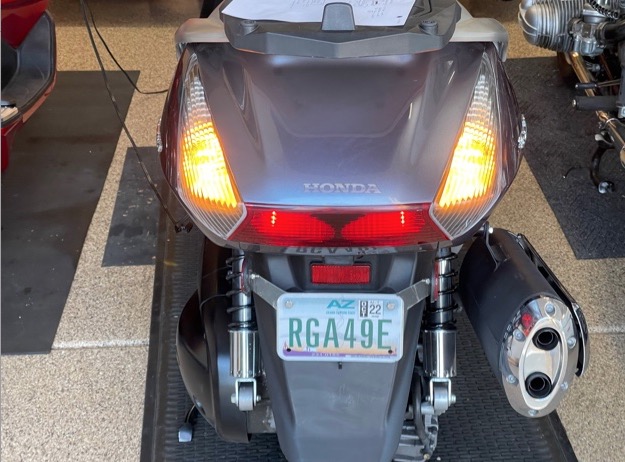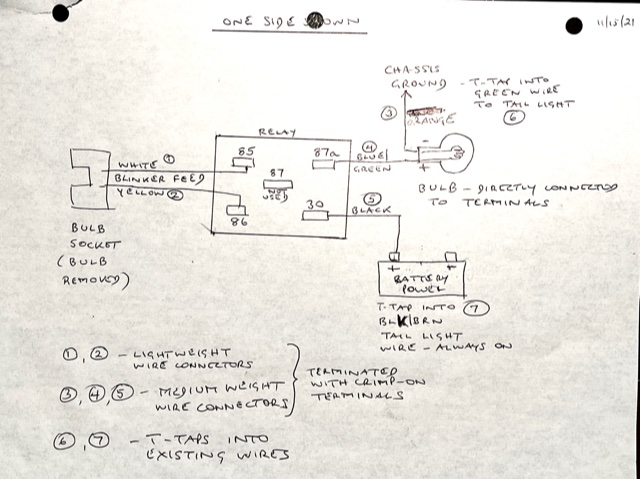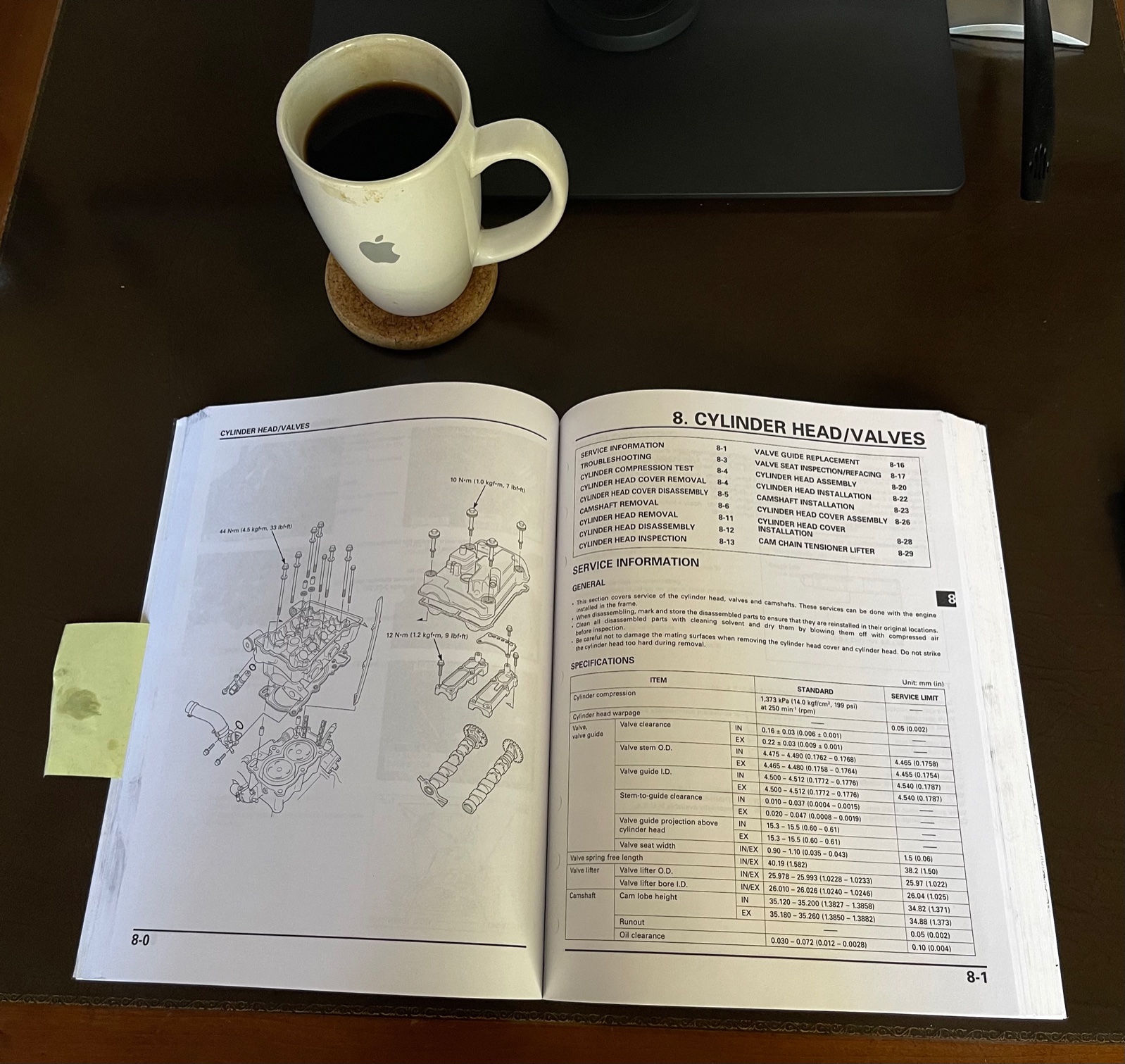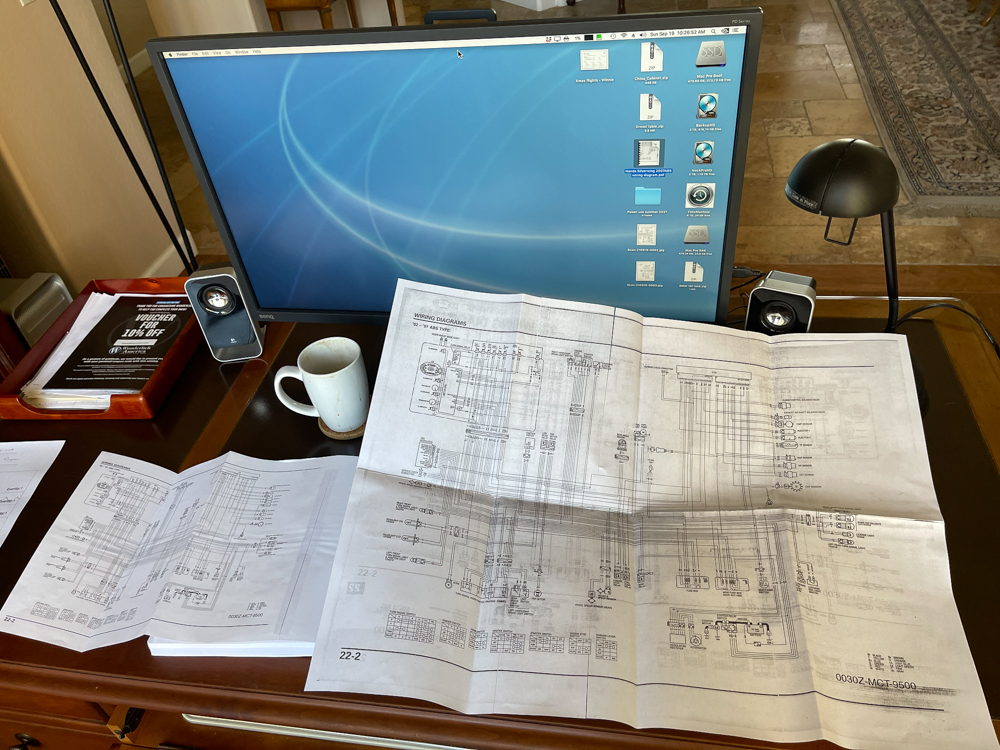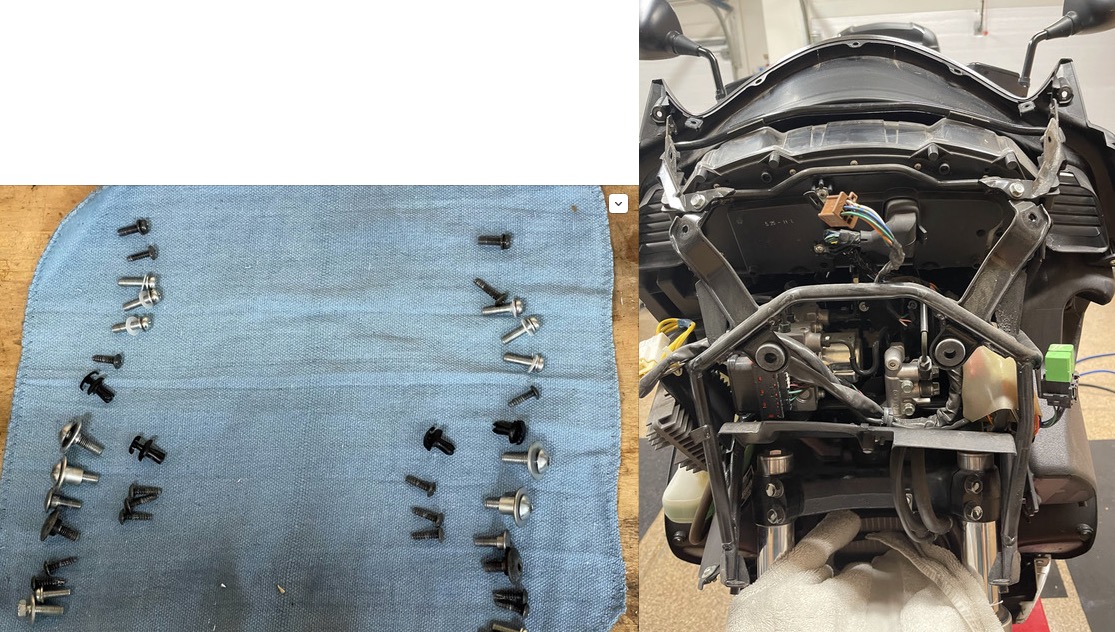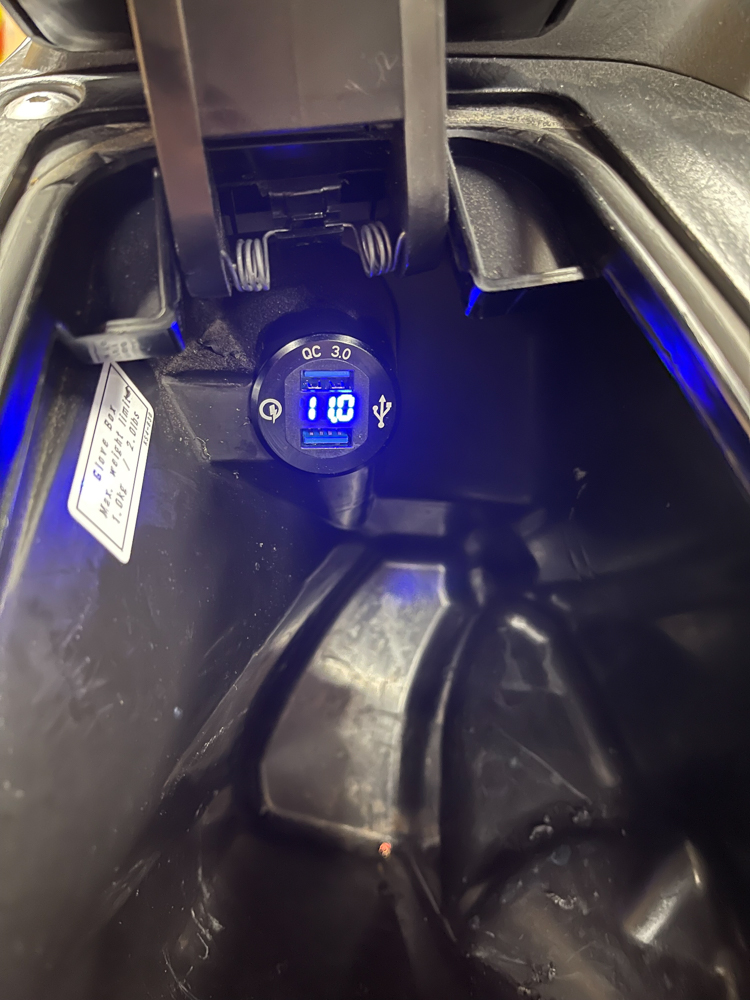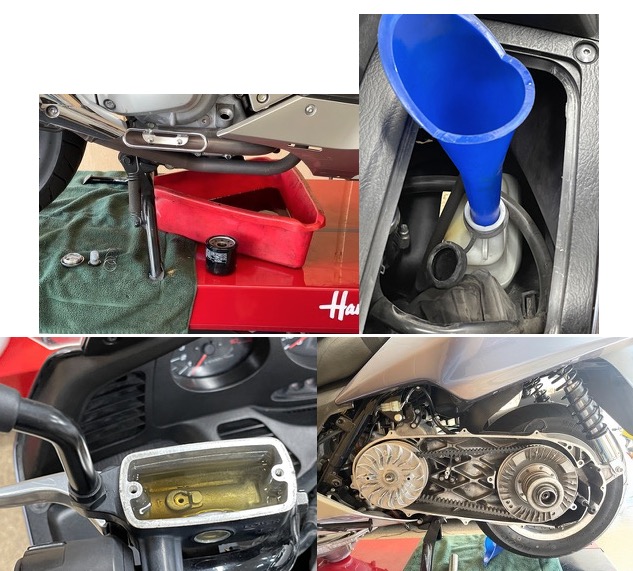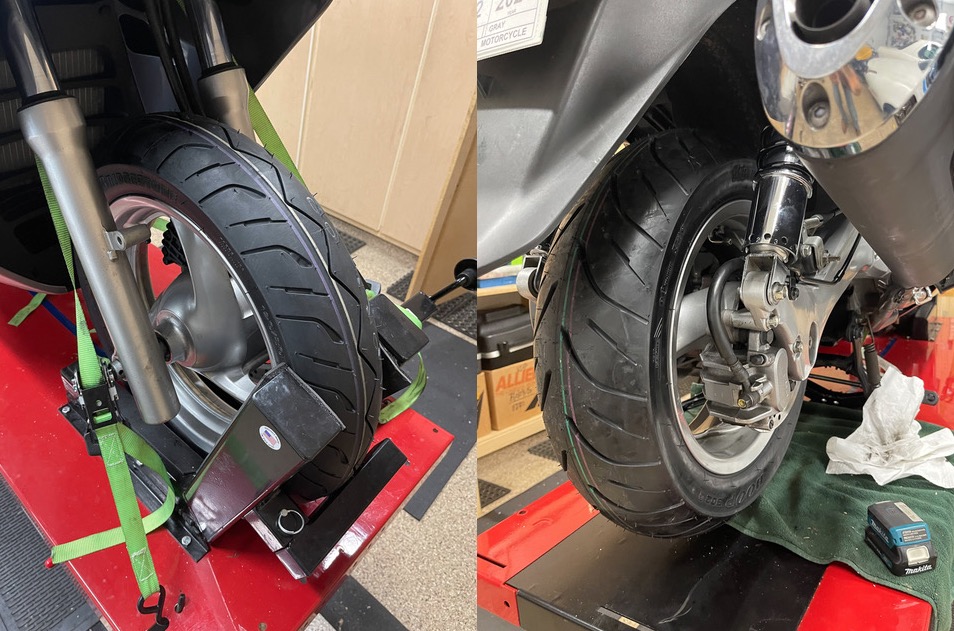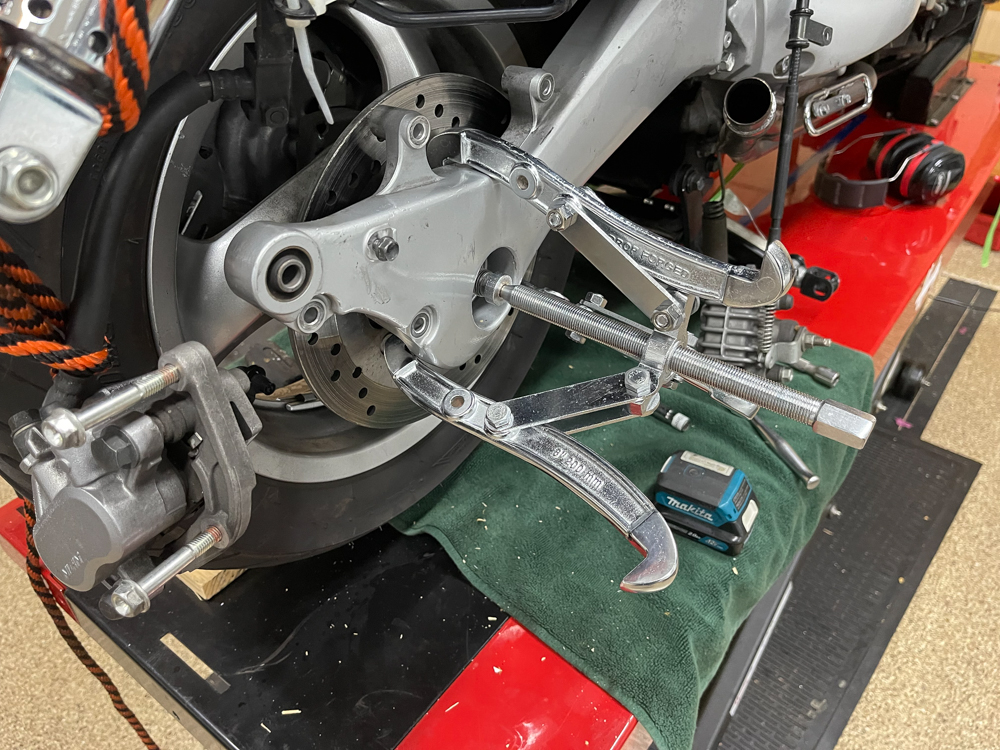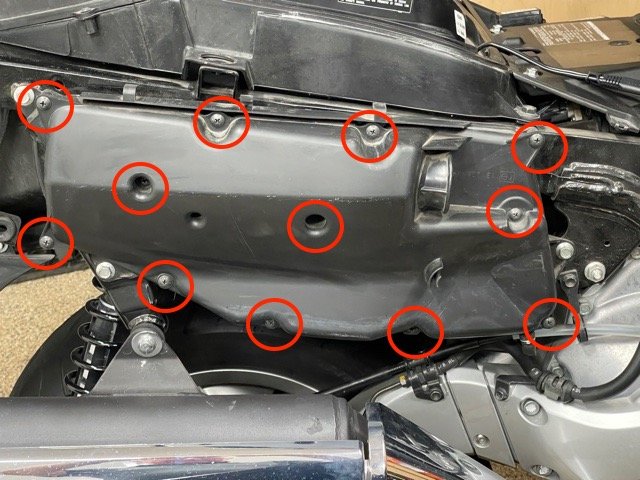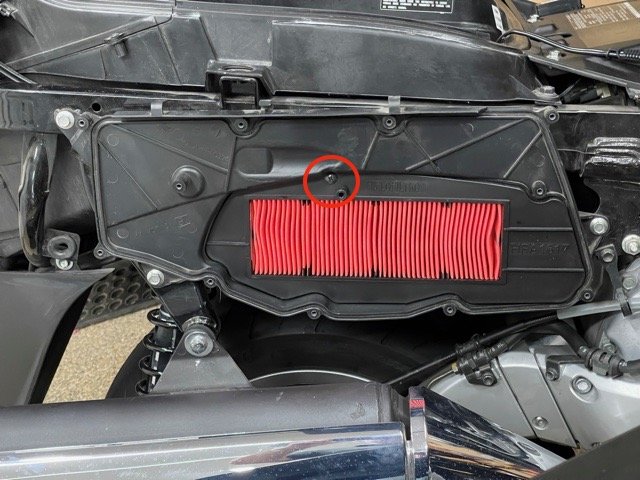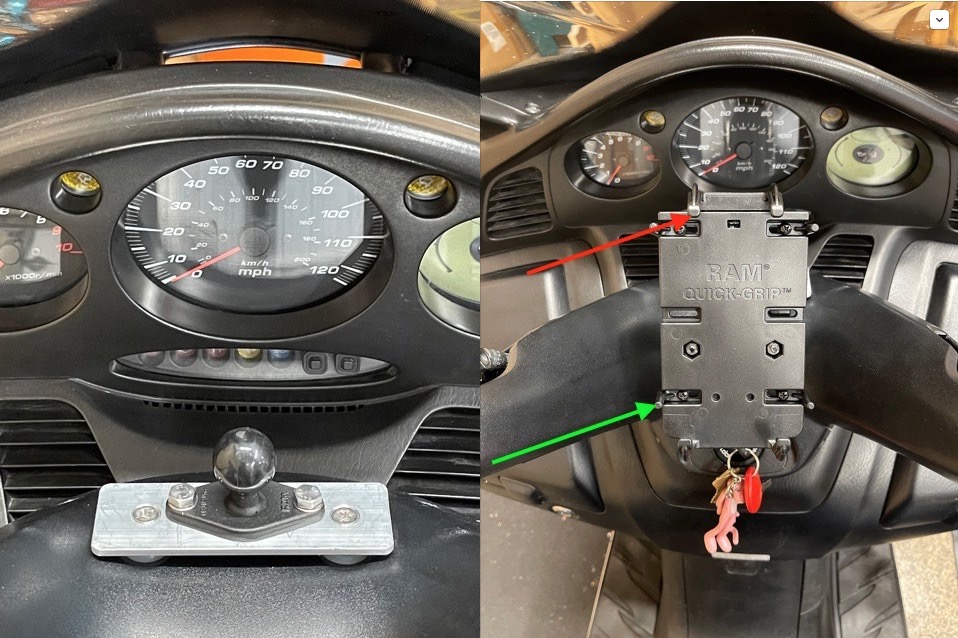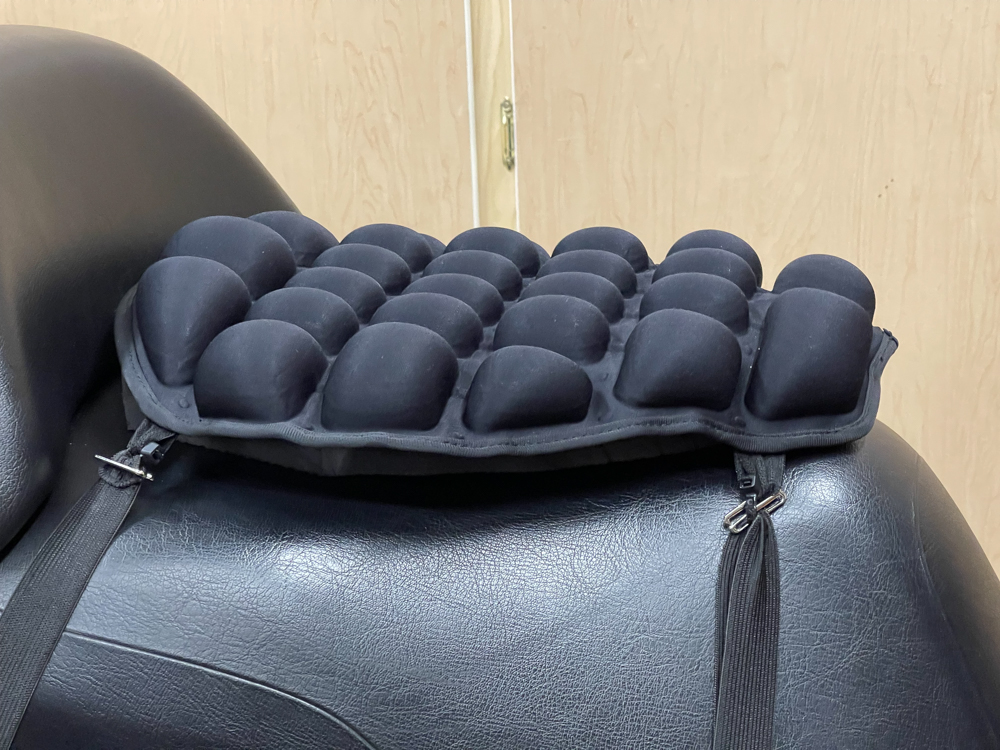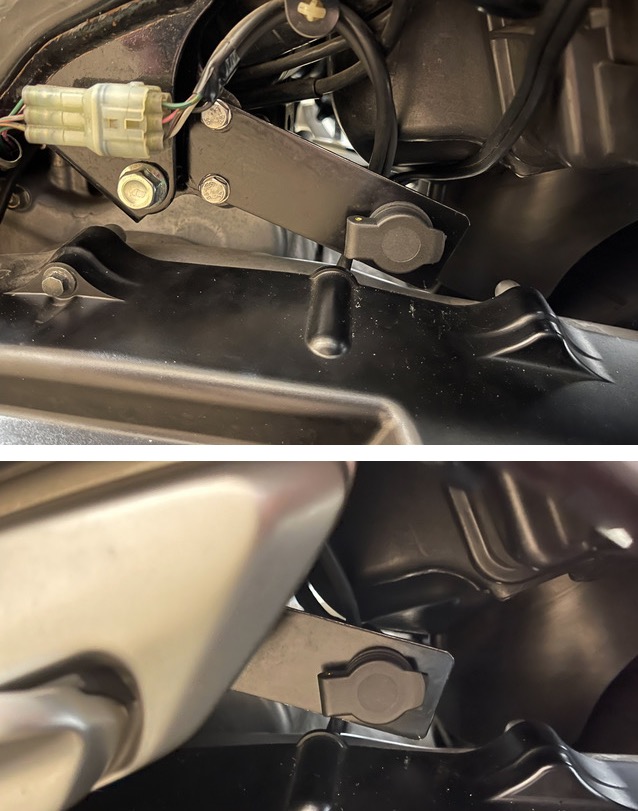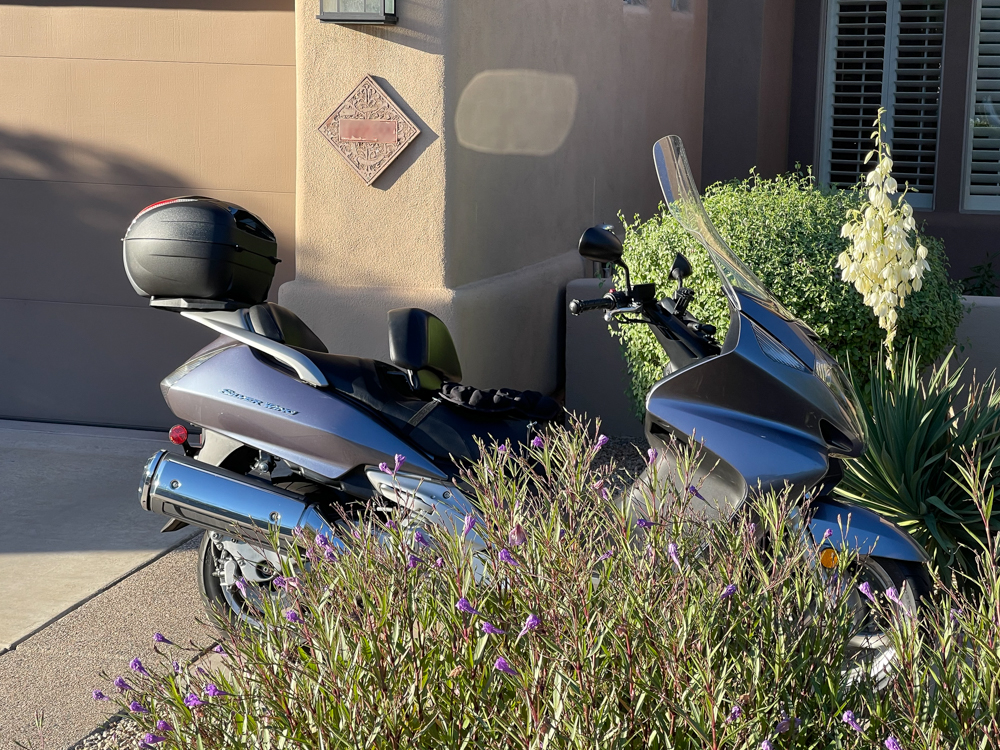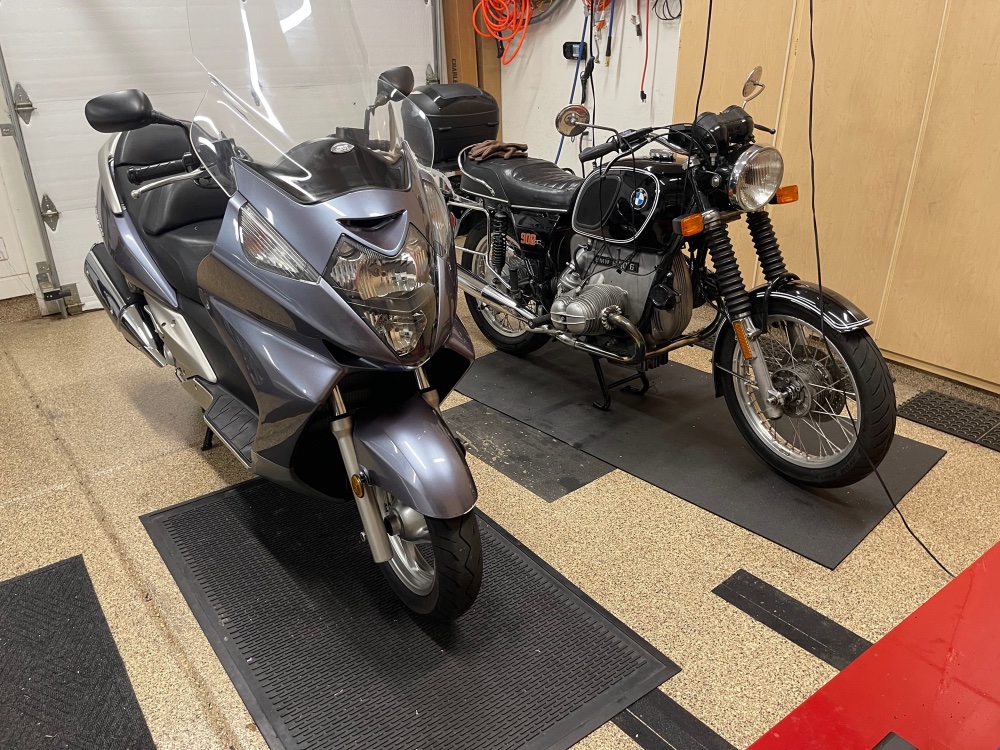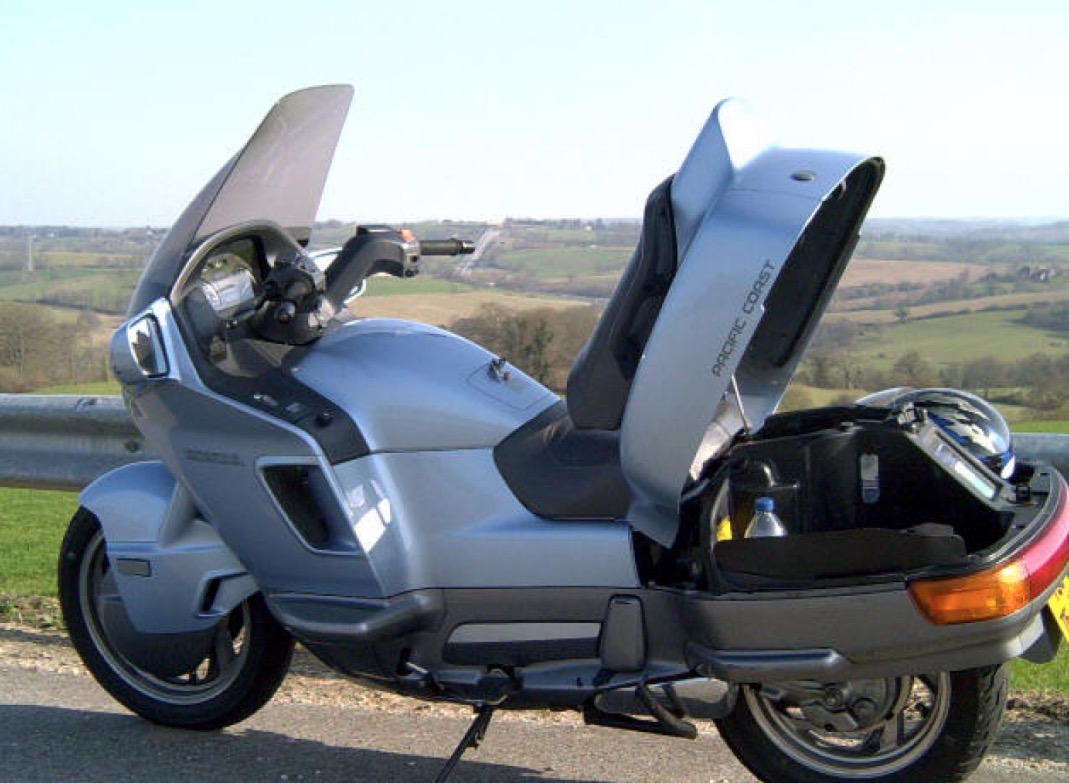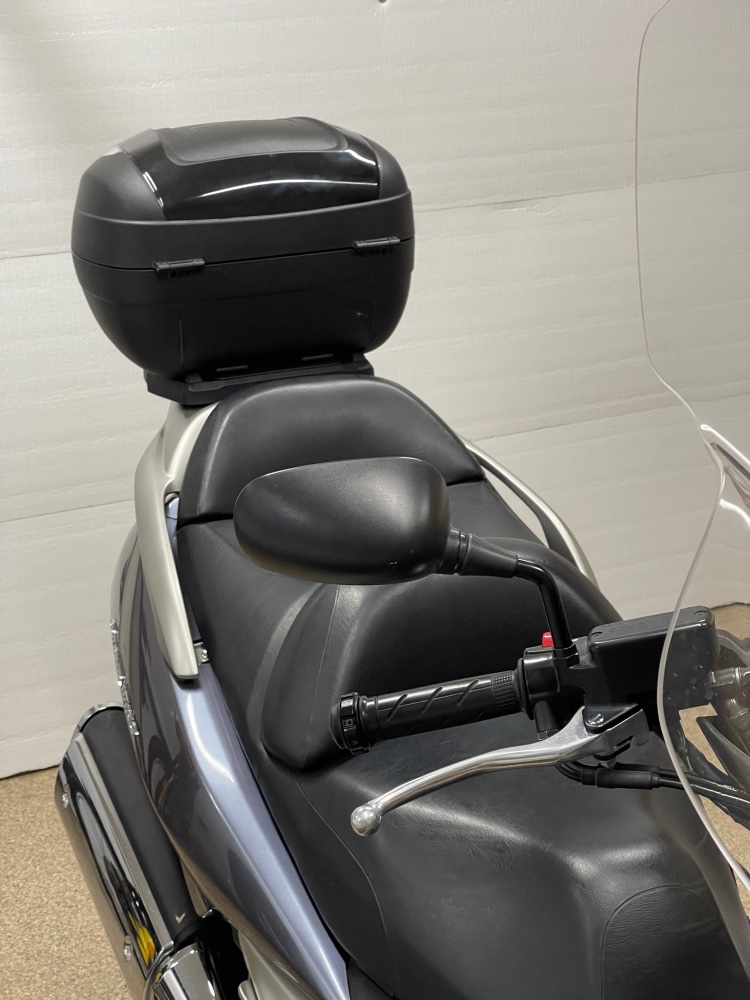Thirty five years of happy wrenching and riding.
I became the custodian of my 1975 BMW R90/6 ‘airhead’ motorcycle 35 years ago today, buying it for $2,000 in Los Angeles from the original owner with just 15,000 miles on the odometer. René, the wonderful Chilean seller, was returning to the country of his birth and assured me that riding a single track vehicle on local roads was not a prescription for a long life. He also informed me that he had turned down two earlier offers from ‘irresponsible kids’ who would not accord his machine the duty of care it was due. I do not think I have let him down.
This beautifully made machine, an exemplar of the best mid-twentieth century technology – and not all that much changed from the 1931 original design – is notable for its near total absence of electronic gizmos, a source of considerable joy for this mechanical engineer. Any self respecting mech eng will tell you that electricity is the work of the devil. And this is very much an engineer’s dream for the machine is easy to work on, most parts easily accessible with few special tools required. Best of all the machine’s enthusiastic following sees to it that most replacement parts remain available, 30 years after the last airhead left the German assembly line. Yes, there’s more maintenance than with a Honda but reliability is comparable to that of those fabulous Japanese designs.
What follows is a pictorial history of my time with the bike over the past 35 years. I continue to ride it regularly.
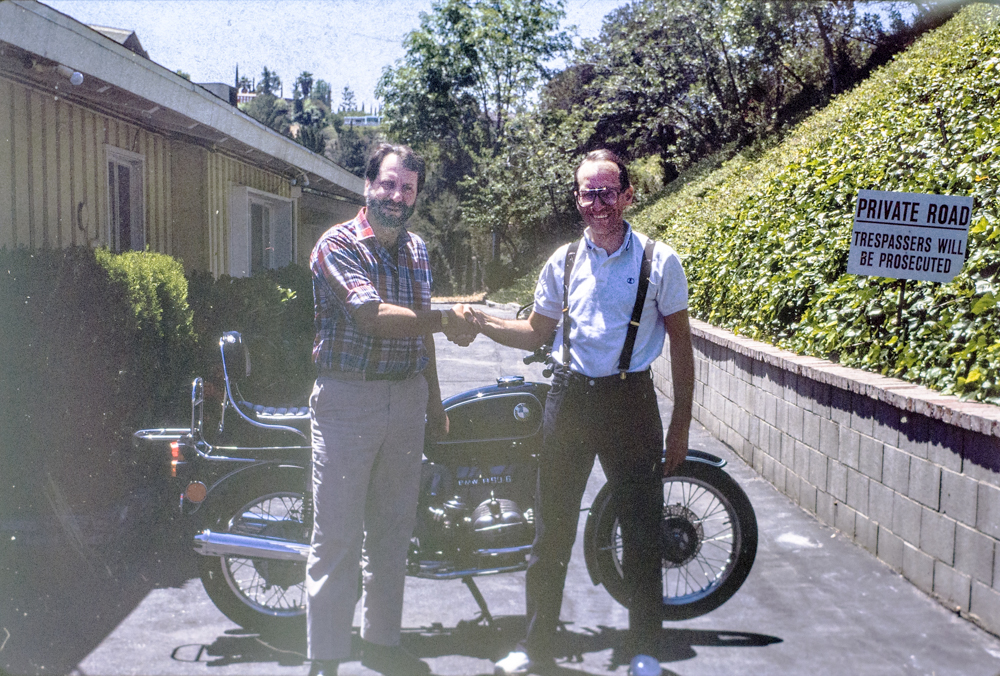
June 16, 1990. Accepting delivery in Encino, CA from
the first owner, René Francisco Lama.

At the fabled Rock Store in Malibu in 1990.
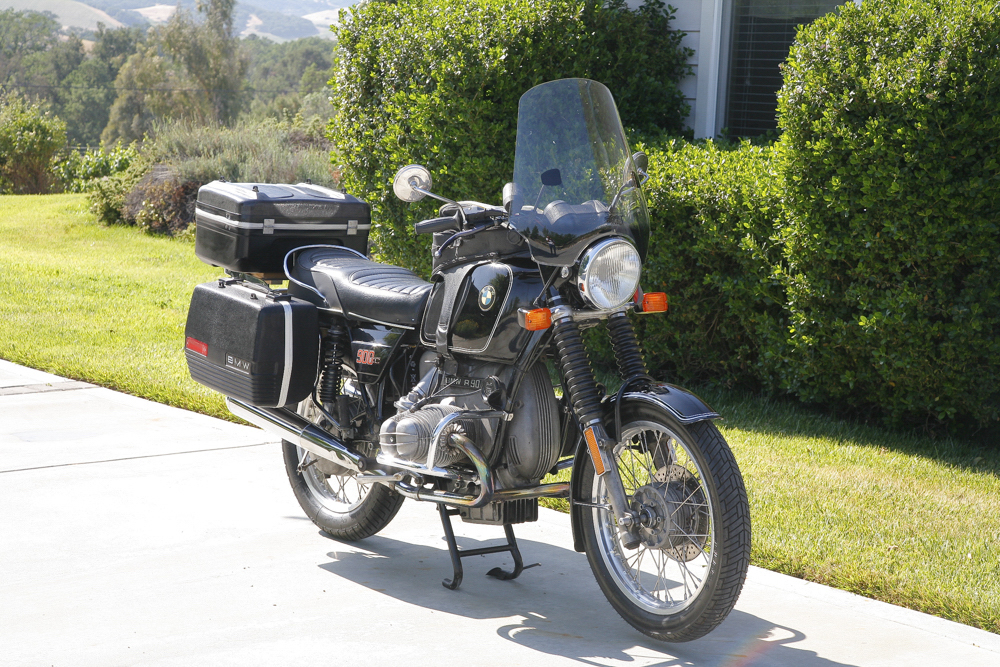
Ready for touring with bags and a small windshield.
The original café fairing broke when the bike fell over
in my Encino garage during the Northridge earthquake,
January 17, 1994, the only time it has been down.
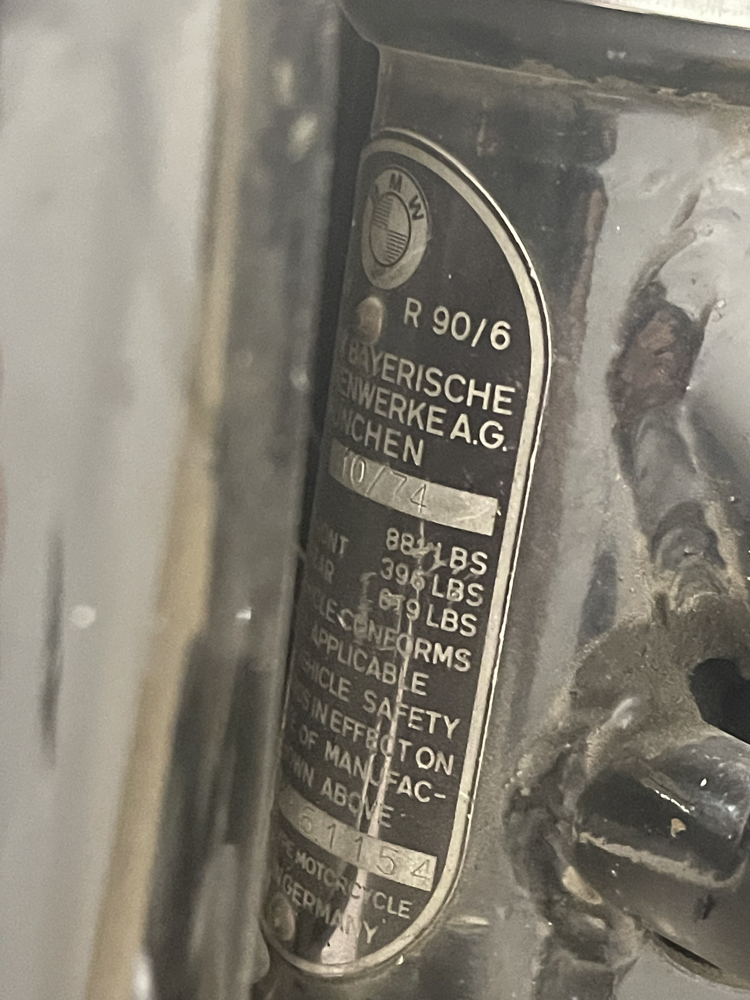
Manufactured in October 1974, the bike was sold by
Bob Brown’s Motorworks in Pomona to the first owner in 1975.
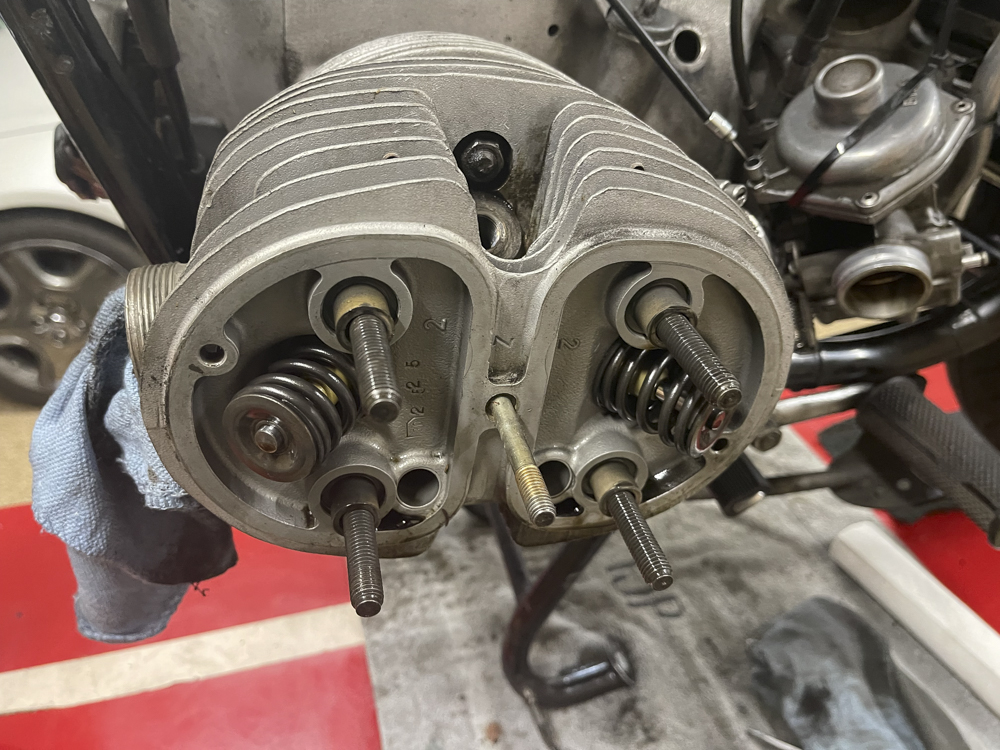
The motor is a simple two valve pushrod design.
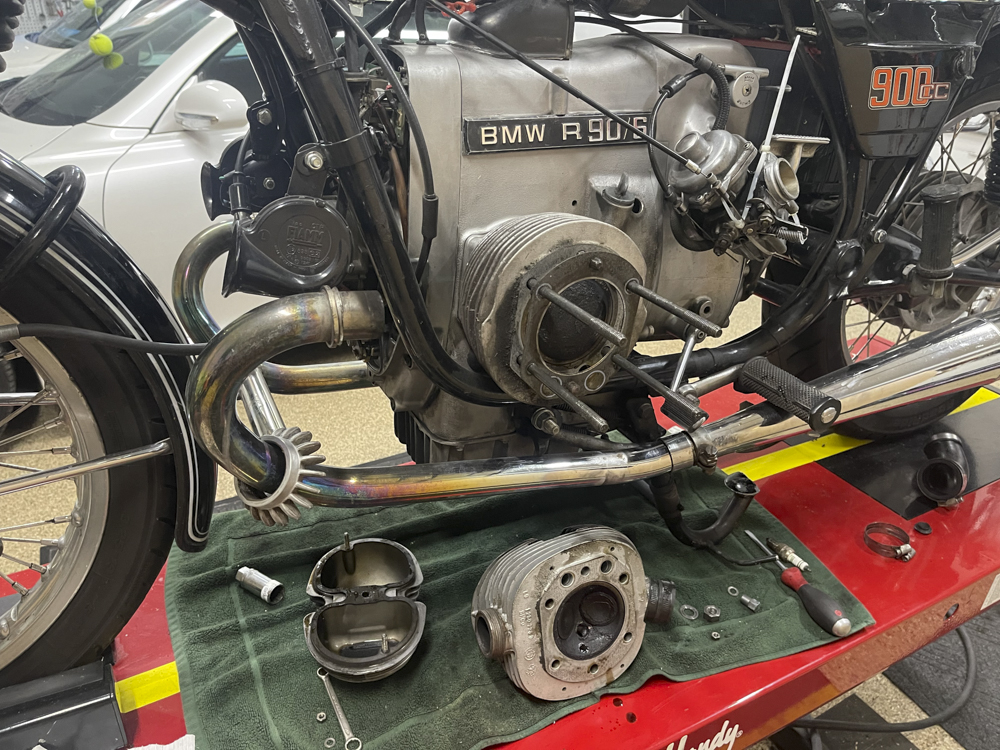
Engine maintenance is easy owing to the horizontally
mounted ‘boxer’ cylinders. The valve cover and valve
head have been removed here.
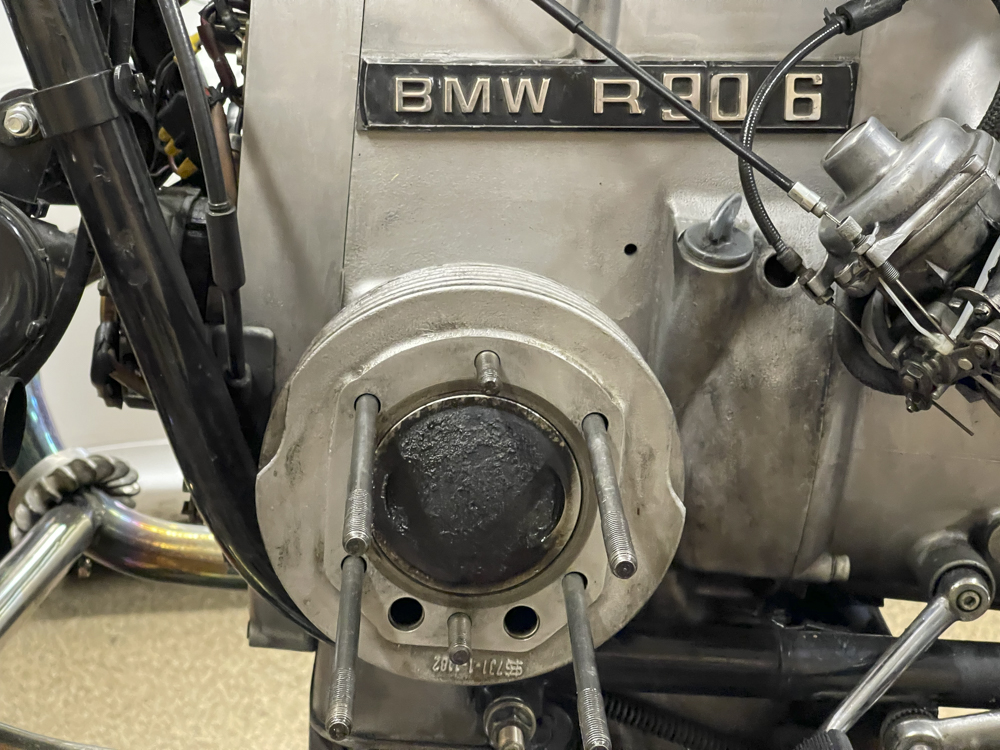
Resealing the cylinder with new gaskets is a simple task.
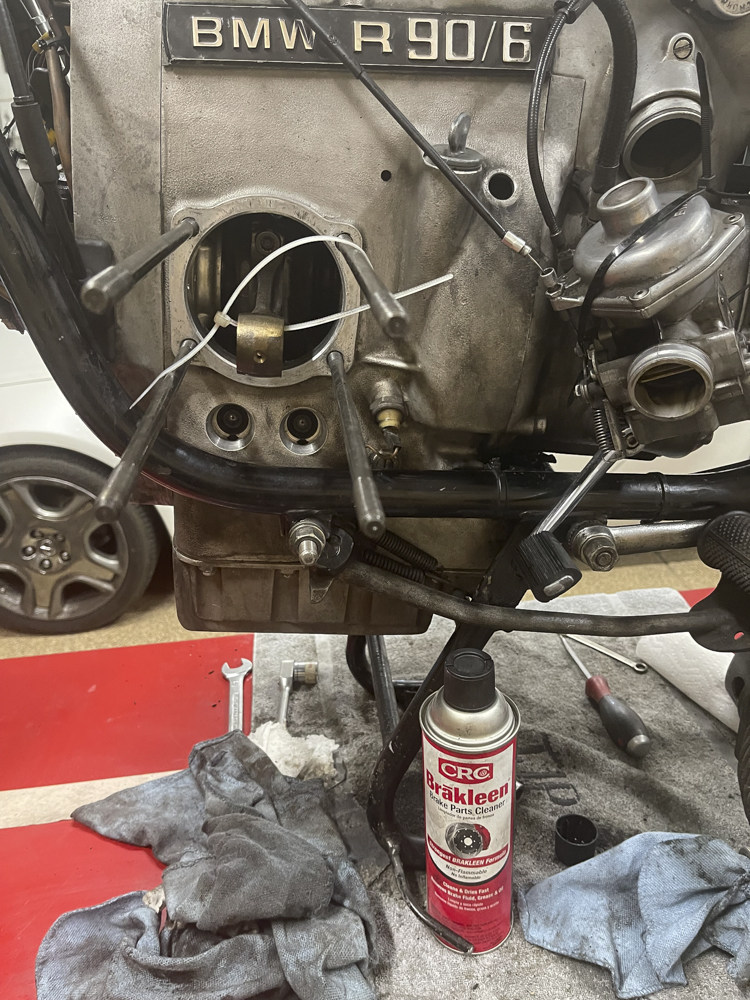
With the piston removed the con rod is held safely
in place with a cable tie. Nicks on the base gasket mounting
surface are not a good idea. The rubber pushrod seals
are replaced at the same time – they harden with
age and heat and leak.
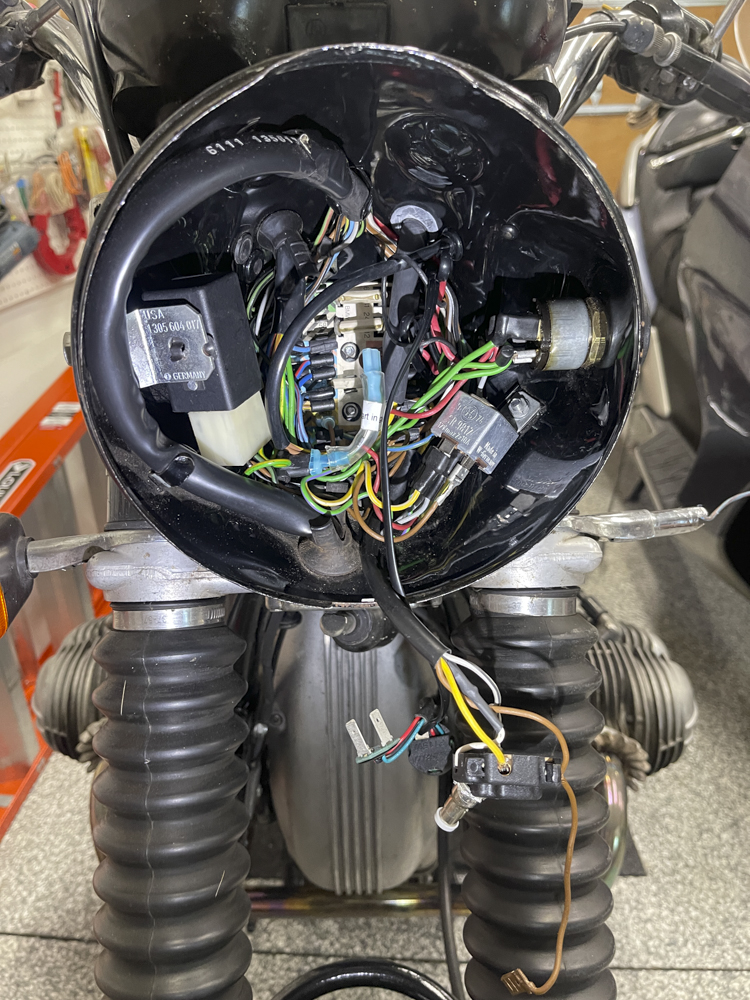
Spaghetti junction. Not BMW’s proudest moment.
The wiring meets up with a small distribution board
in the head shell
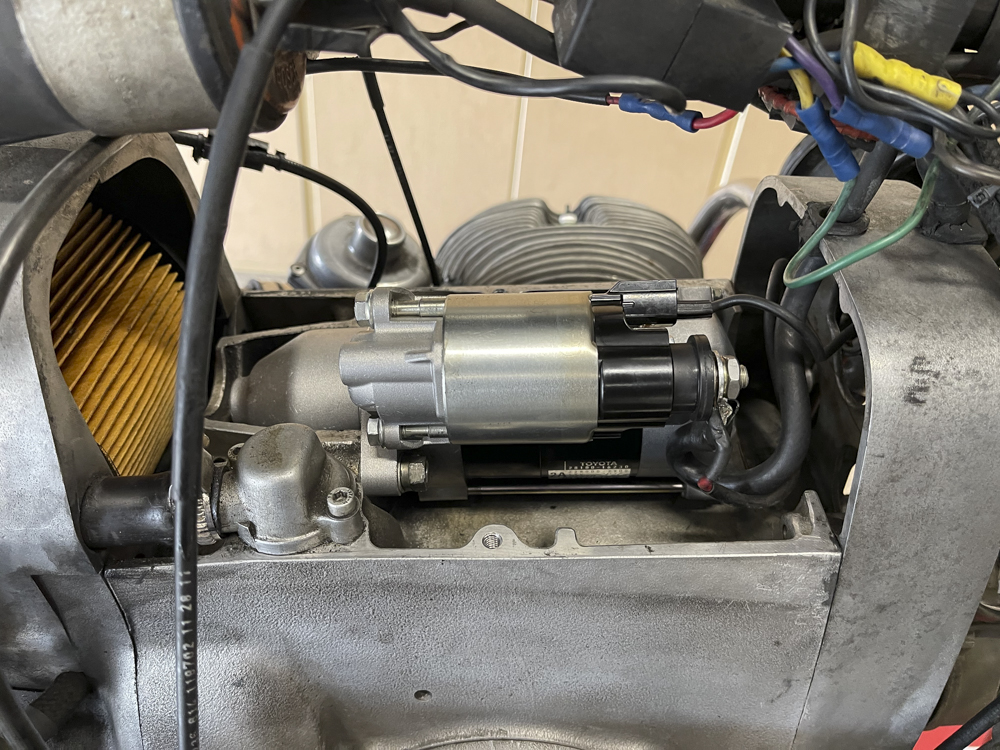
The stock Bosch starter motor is awful, struggling to
turn a cold engine. After having it rebuilt twice over
the years I replaced it with a Toyota truck starter with
an adapted Bendix. Twice the power, half the weight and
current draw. The bike’s modular design means that the
starter can be removed in under 15 minutes.
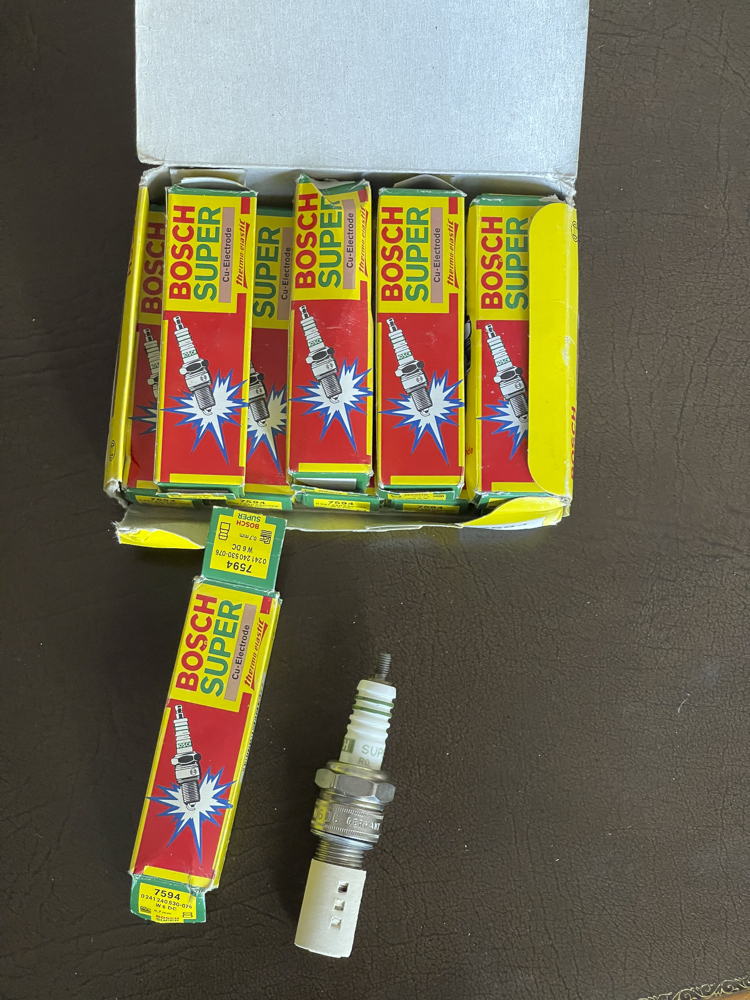
Look hard enough and you can still find original German
Bosch copper spark plugs. That’s all the bike needs in
the ignition department. And ignition timing is 100%
mechanical, no electronics.
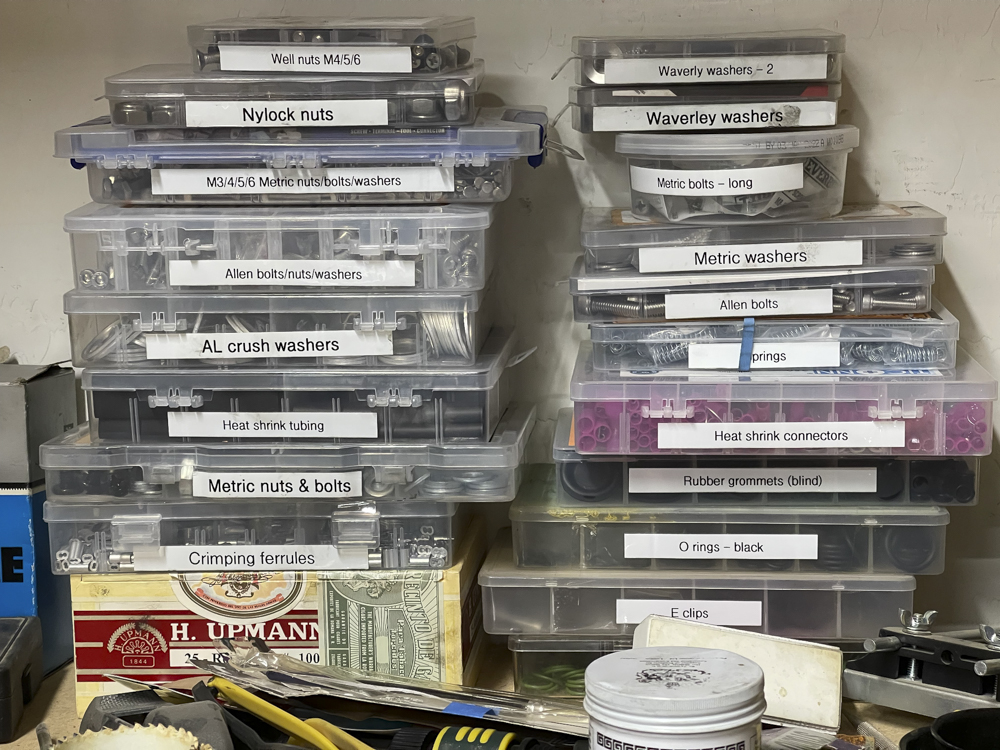
A collection of metric fasteners is essential.
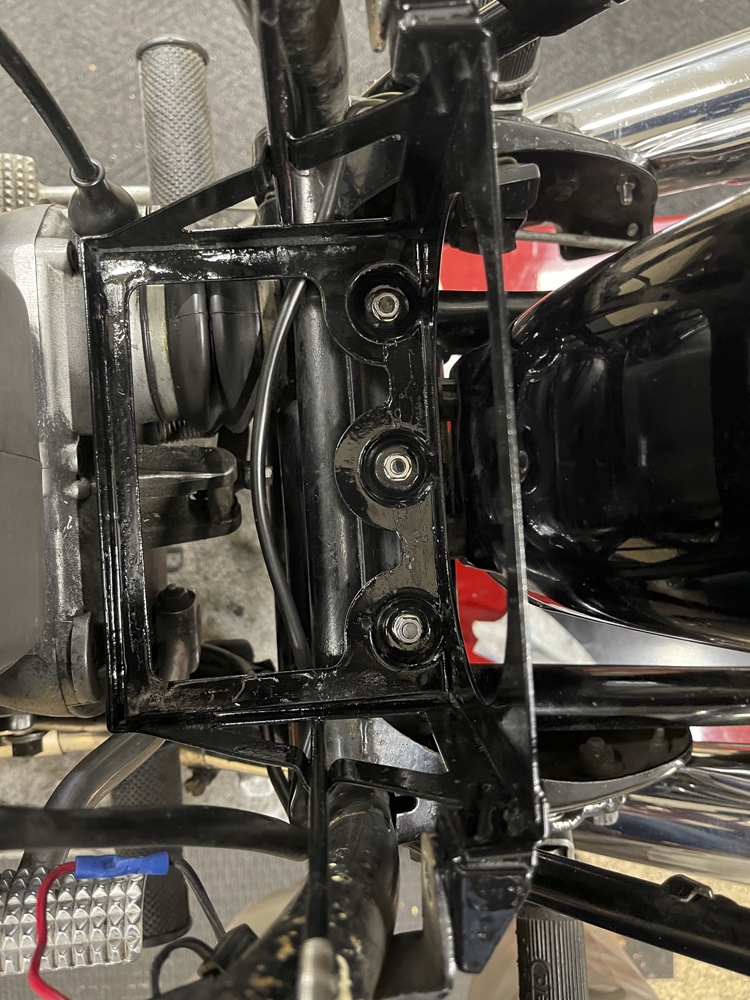
Back in the day batteries came filled with liquid acid, which
would inevitably leak, corroding the battery tray.
The tray has been removed, wire brushed and repainted here.
Modern gel cell batteries do not leak, so this is a lifetime fix.
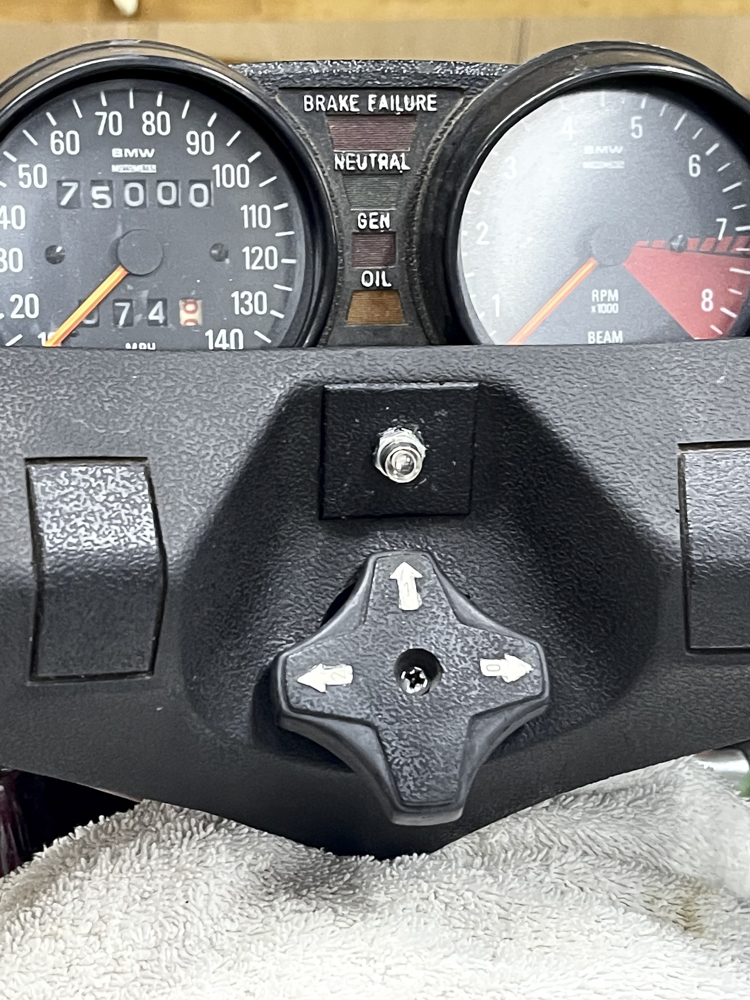
Well, I do have one electronic part in the bike. Here’s
the daylight sensor for the Kisan headlight modulator which
flashes the headlight in daytime riding, enhancing the rider’s
visibility to motorists focused on their cell phones. The
three position steering damper is below.
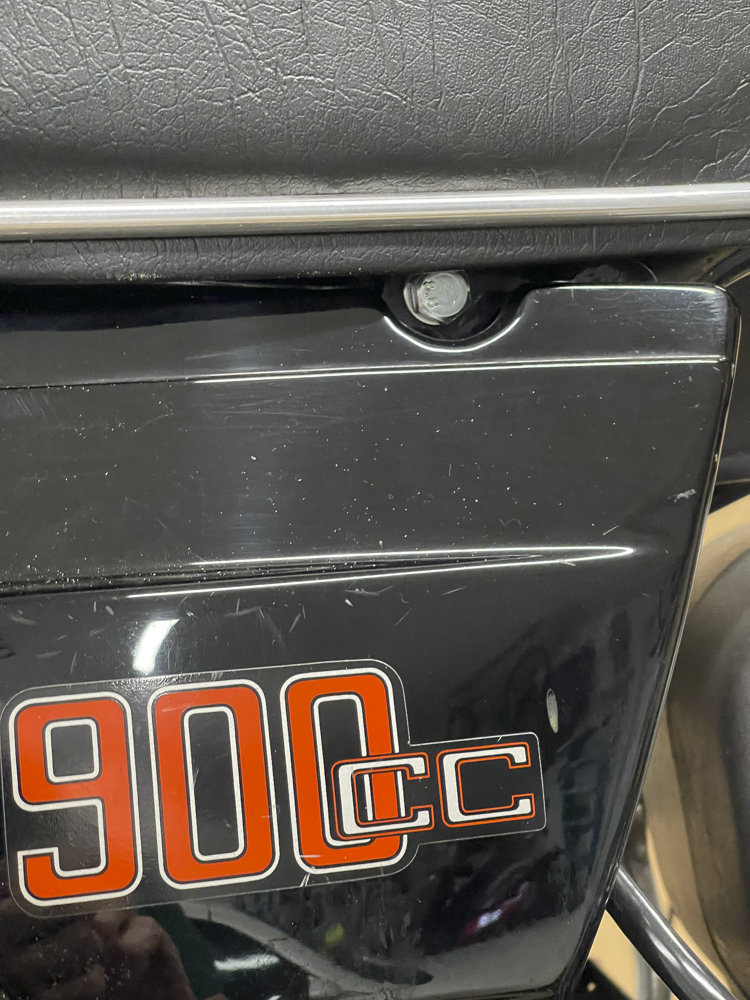
Over the years I have replaced most of the steel fasteners
with stainless ones.
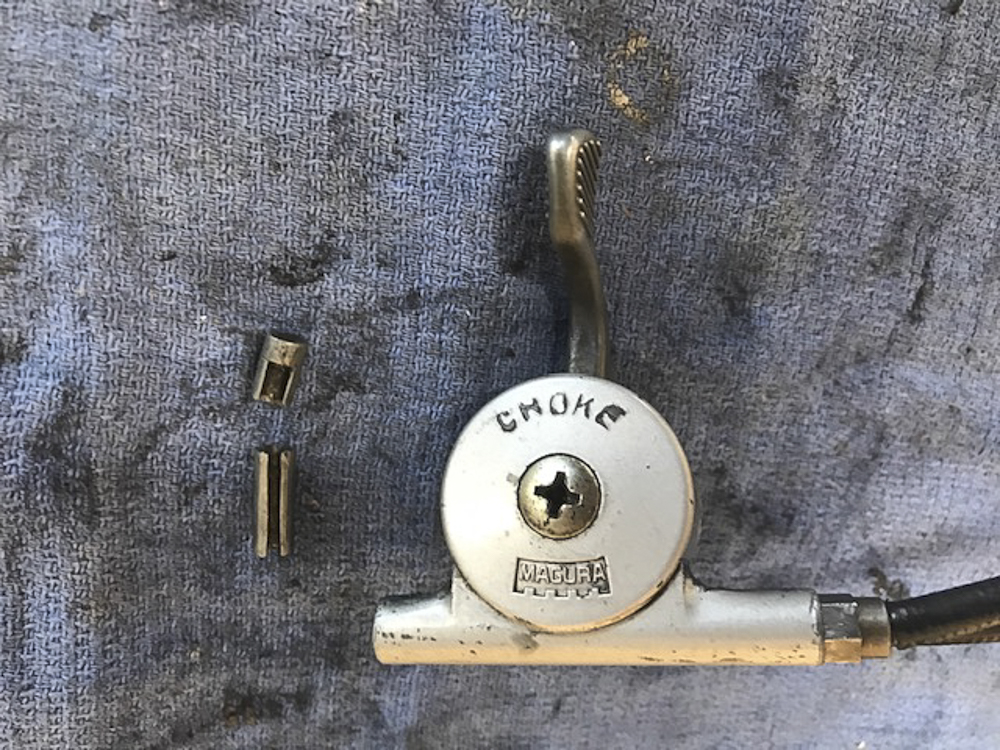
A rare failure – the choke cable toothed follower snapped
rendering the choke inoperative on one side. A fellow airhead
kindly gave me the replacement part which is NLA from BMW.
Magura could learn from Rolex when it comes to engraving.
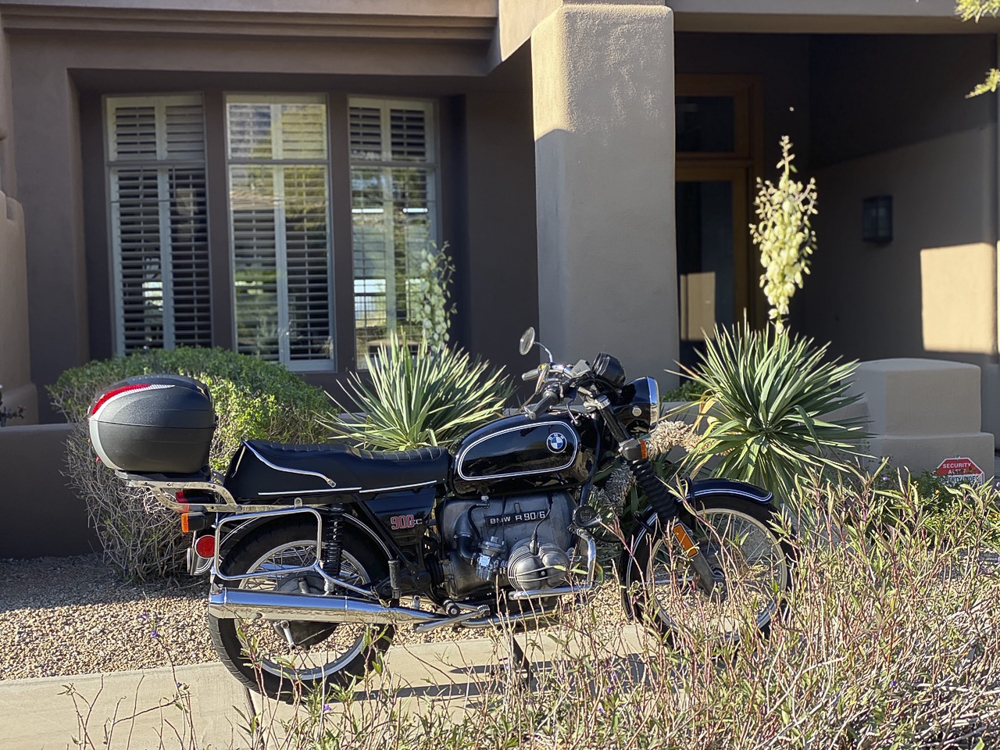
The bike came with the smaller 18 liter tank,
beautifully pinstriped by the ladies in Berlin.
The QD trunk is by Givi of Italy, and holds a full face helmet.
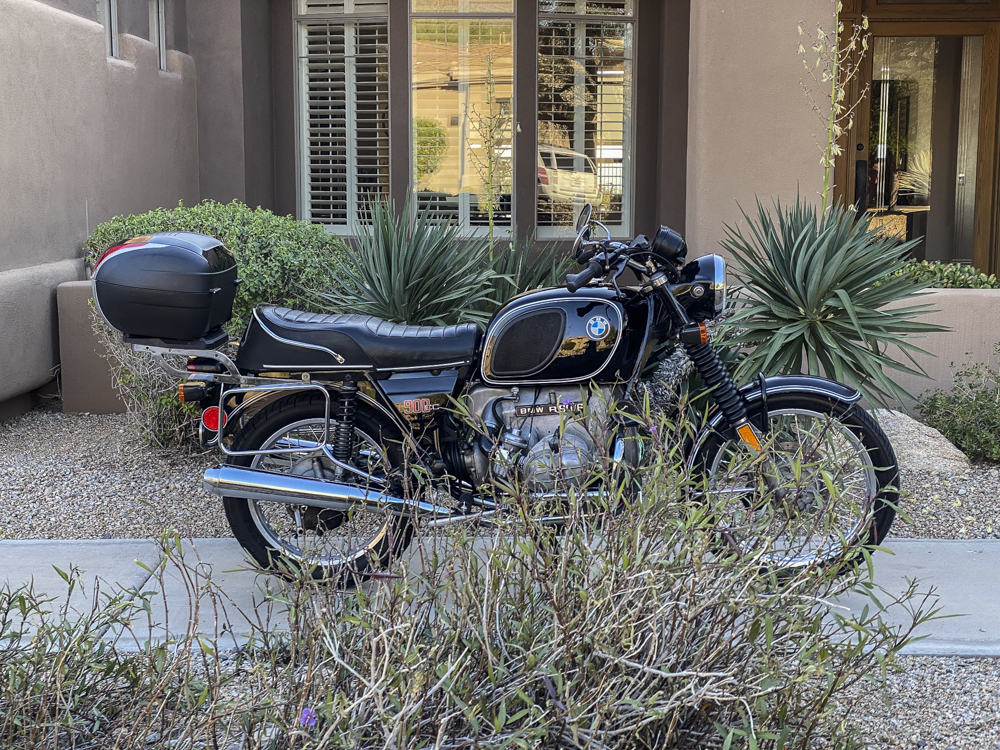
A few years ago I finally got my beaten up 22 liter larger
tank refurbished and the pin striping, done in
Scottsdale, is beyond perfect. I think it
looks far better than the small tank.

Way ahead of its time, the largely modular design makes
accessing most assemblies easy. Here the rear wheel,
driven by a shaft – no chains here – has been removed
for tire replacement. Sadly the wheels require
tubed tires, far less safe than modern tubeless ones.
The shocks are aftermarket Konis, superior to
the stock ones, and recently rebuilt.
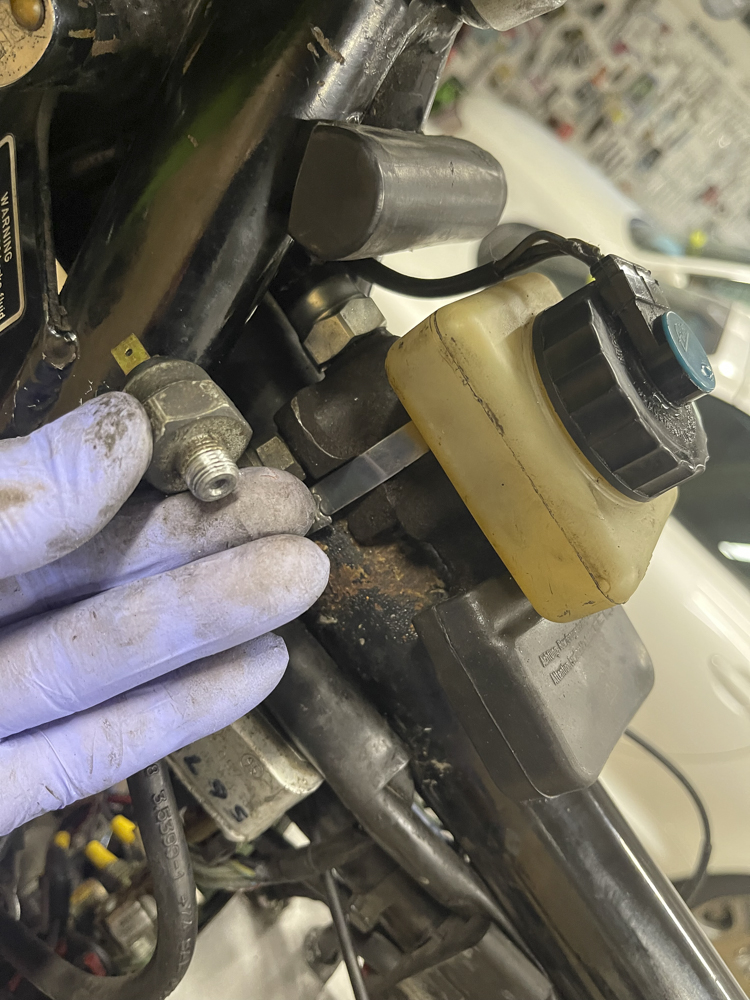
The brake light sensor is a simple pressure switch.
Here I am replacing it as it failed after 30 years.
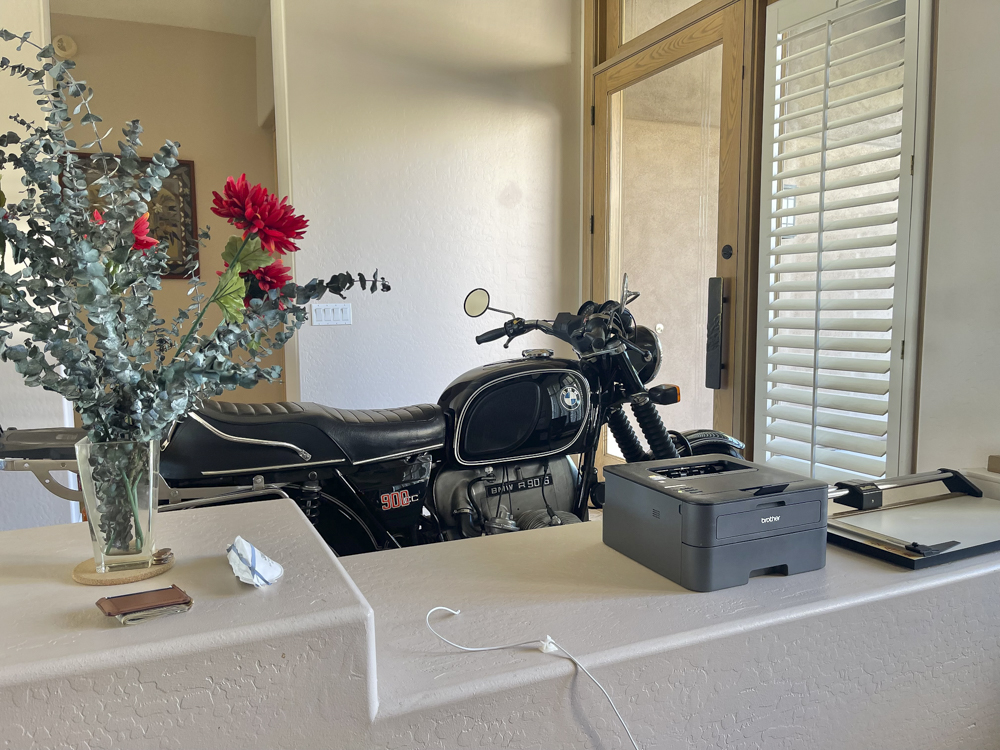
During baking Scottsdale summers I kept the bike indoors
to avoid premature rotting of rubber parts. Eventually
I insulated and air conditioned the garage to make for
better summer storage.
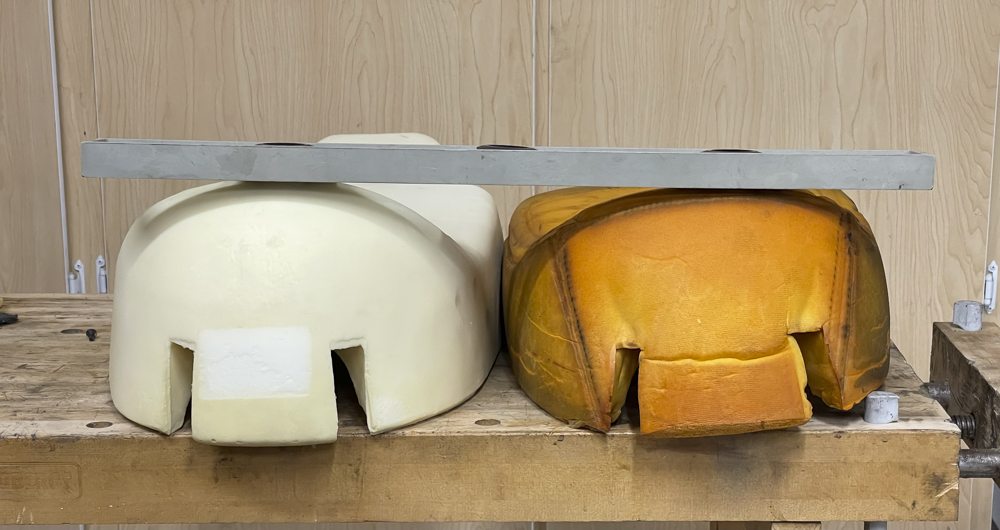
After 30 years the saddle foam was shot and the vinyl
seat cover was cracking. New foam from the Fatherland
on the left.
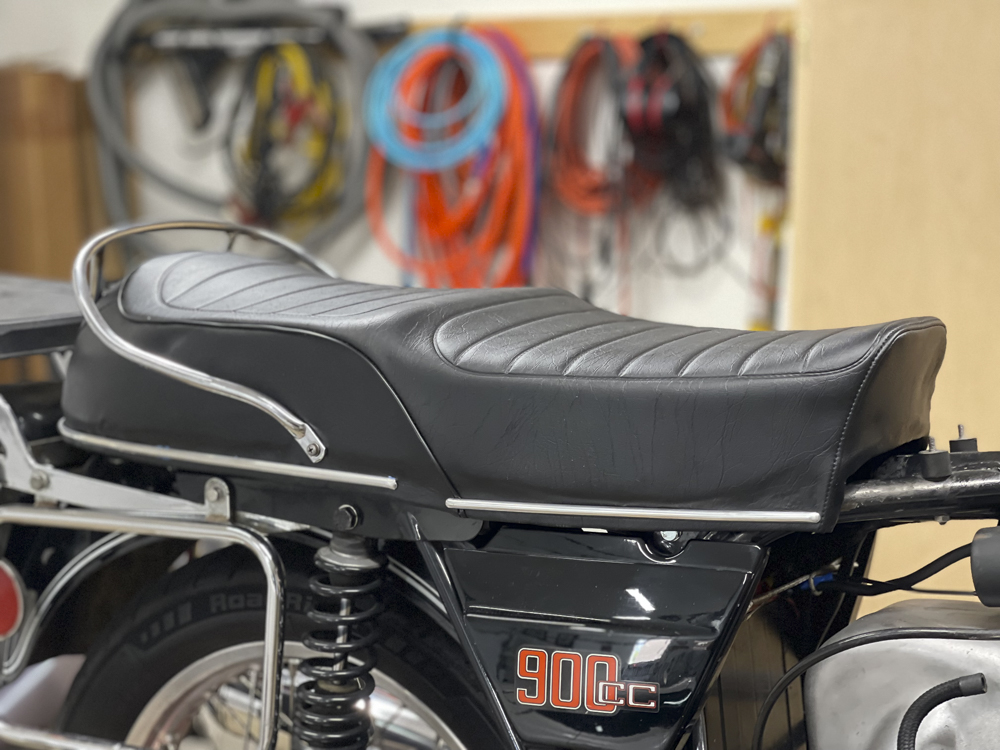
New seat cover installed over new foam
A very time consuming job, but very satisfying, and
easier on the bottom to boot!
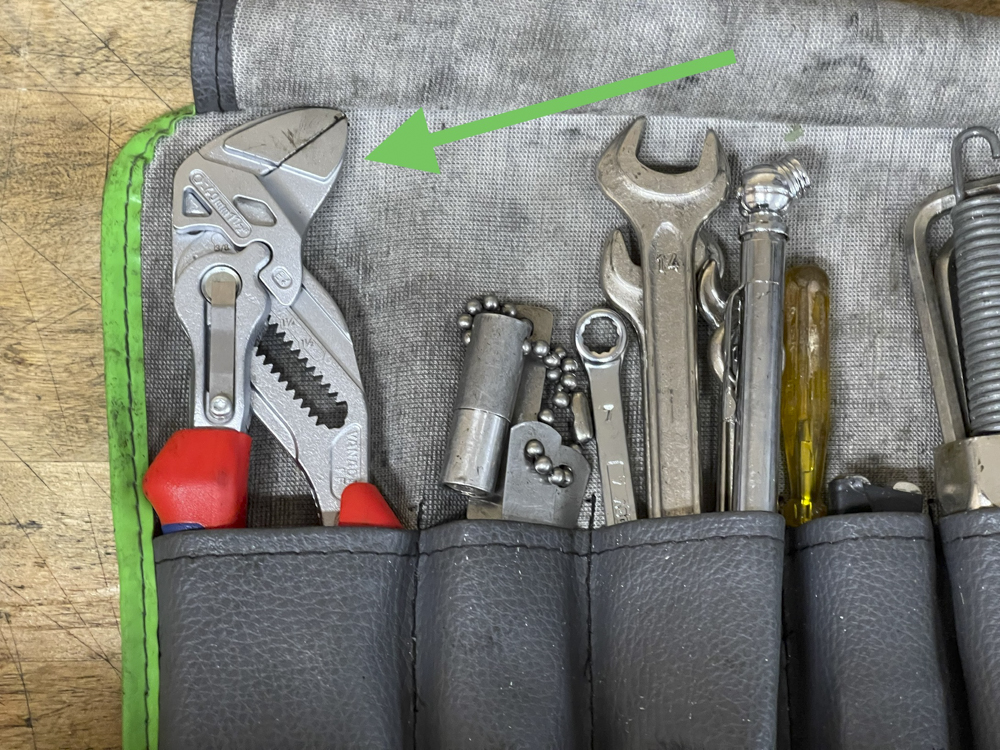
While the stock tool kit is excellent the pliers
are poor quality. A superb pair of Knipex adjustable
pliers does the trick far better. The cylinder on
a chain emulates TDC when adjusting the mechanical points
ignition when installed on the nose of the cam.
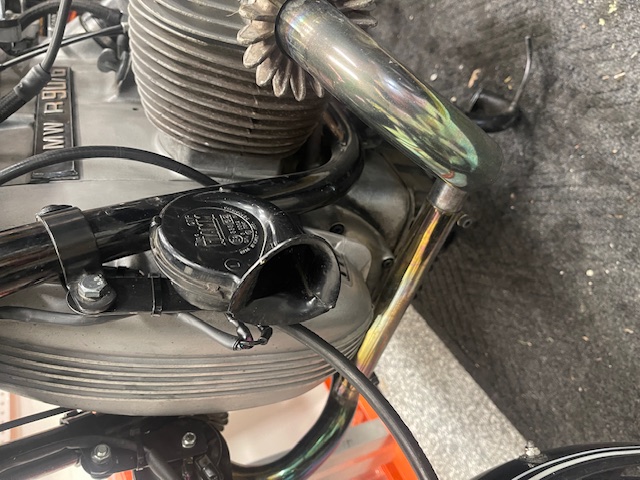
The twin FIAMM Italian horns are not only much louder
than the weak stock offering, they are also paired out of
tune, the resulting interference effect on the two sound waves
making the output truly obnoxious. You want that in
a world which often does not see or hear bikers,
especially those on quiet BMW airheads. As the horns
draw high current I added a relay to avoid frying
the relatively lightweight horn button circuitry.
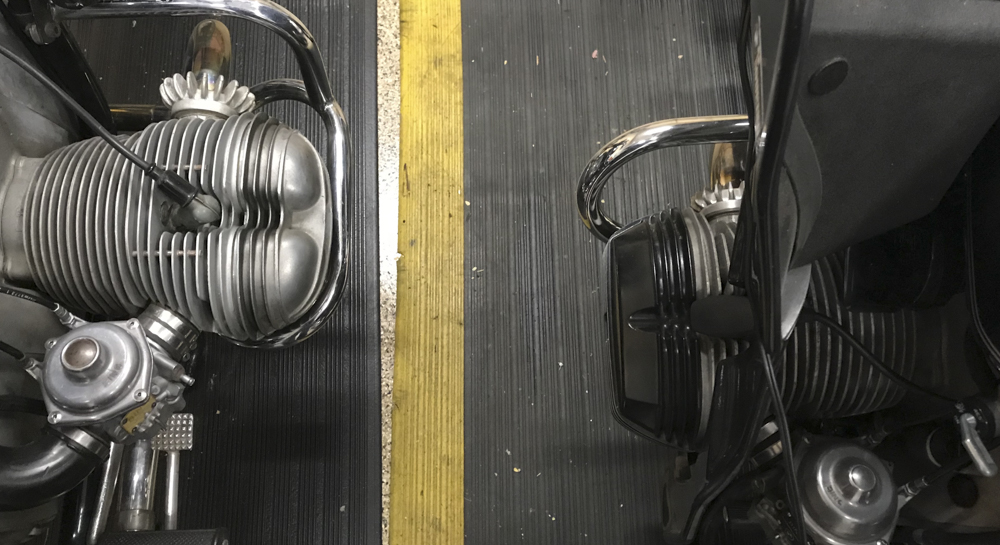
The horizontally opposed boxer engine design lasted through
1995, but remains available in some of BMW’s latest
machines where it is now oil and air cooled. Here the
1975 valve cover compares with that on a 1994 R100RT
touring machine. No prizes for guessing which I prefer.
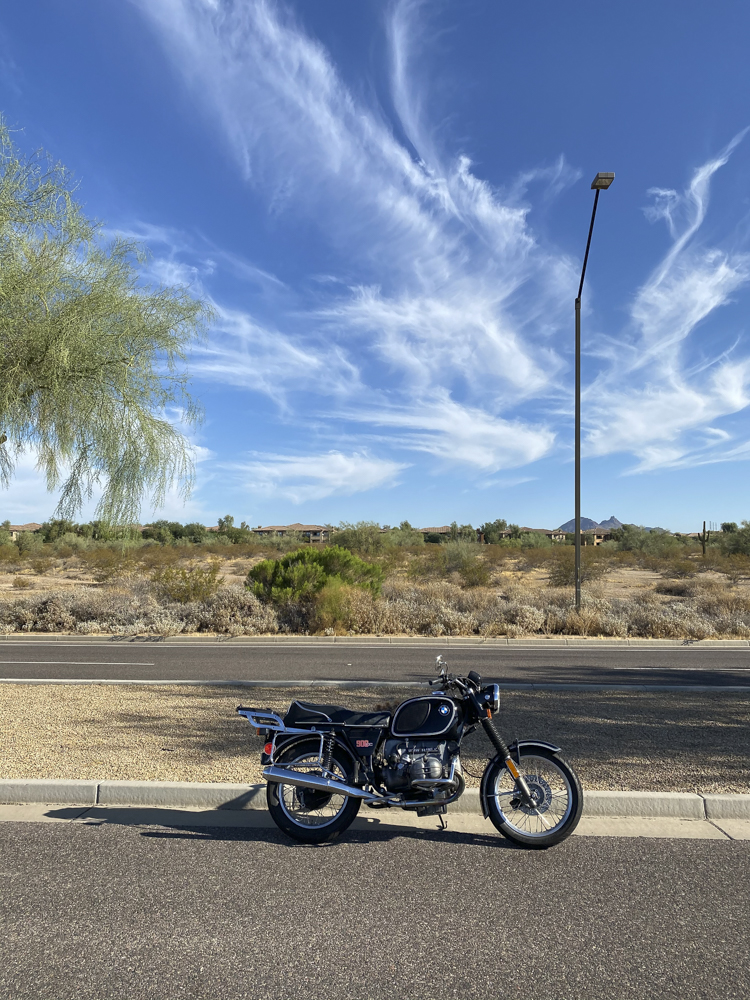
In Scottsdale, Arizona.
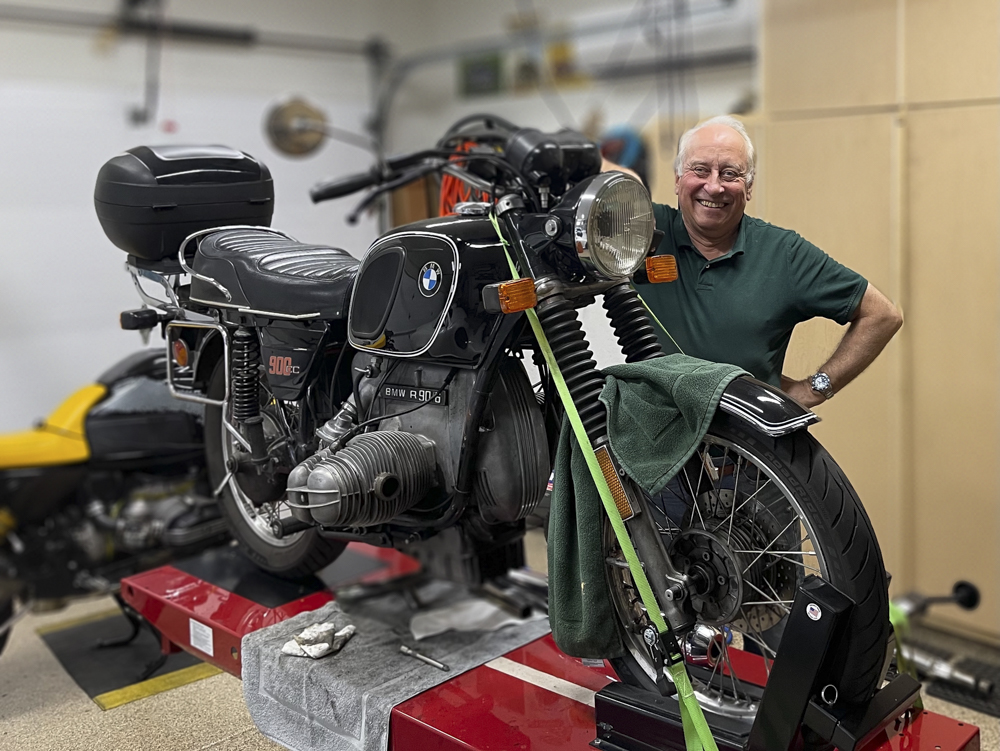
A happy owner, with the bike on an all American
Handy bike lift. The hair is greyer but the smile is
every bit as wide.
I wish I could tell you that I am looking forward to the next 35 years with this beautiful machine but statistics and anno domini suggest otherwise.
